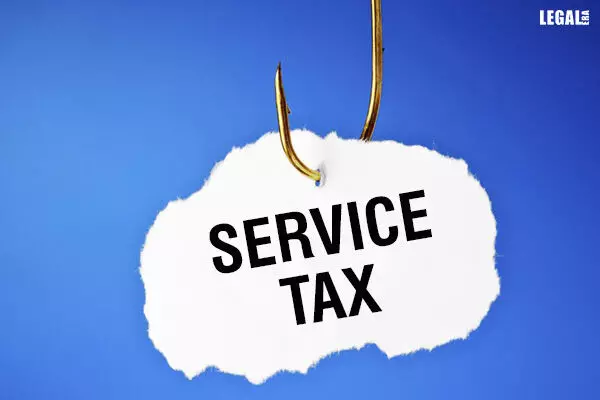- Home
- News
- Articles+
- Aerospace
- AI
- Agriculture
- Alternate Dispute Resolution
- Arbitration & Mediation
- Banking and Finance
- Bankruptcy
- Book Review
- Bribery & Corruption
- Commercial Litigation
- Competition Law
- Conference Reports
- Consumer Products
- Contract
- Corporate Governance
- Corporate Law
- Covid-19
- Cryptocurrency
- Cybersecurity
- Data Protection
- Defence
- Digital Economy
- E-commerce
- Employment Law
- Energy and Natural Resources
- Entertainment and Sports Law
- Environmental Law
- ESG
- FDI
- Food and Beverage
- Gaming
- Health Care
- IBC Diaries
- In Focus
- Inclusion & Diversity
- Insurance Law
- Intellectual Property
- International Law
- IP & Tech Era
- Know the Law
- Labour Laws
- Law & Policy and Regulation
- Litigation
- Litigation Funding
- Manufacturing
- Mergers & Acquisitions
- NFTs
- Privacy
- Private Equity
- Project Finance
- Real Estate
- Risk and Compliance
- Student Corner
- Take On Board
- Tax
- Technology Media and Telecom
- Tributes
- Viewpoint
- Zoom In
- Law Firms
- In-House
- Rankings
- E-Magazine
- Legal Era TV
- Events
- News
- Articles
- Aerospace
- AI
- Agriculture
- Alternate Dispute Resolution
- Arbitration & Mediation
- Banking and Finance
- Bankruptcy
- Book Review
- Bribery & Corruption
- Commercial Litigation
- Competition Law
- Conference Reports
- Consumer Products
- Contract
- Corporate Governance
- Corporate Law
- Covid-19
- Cryptocurrency
- Cybersecurity
- Data Protection
- Defence
- Digital Economy
- E-commerce
- Employment Law
- Energy and Natural Resources
- Entertainment and Sports Law
- Environmental Law
- ESG
- FDI
- Food and Beverage
- Gaming
- Health Care
- IBC Diaries
- In Focus
- Inclusion & Diversity
- Insurance Law
- Intellectual Property
- International Law
- IP & Tech Era
- Know the Law
- Labour Laws
- Law & Policy and Regulation
- Litigation
- Litigation Funding
- Manufacturing
- Mergers & Acquisitions
- NFTs
- Privacy
- Private Equity
- Project Finance
- Real Estate
- Risk and Compliance
- Student Corner
- Take On Board
- Tax
- Technology Media and Telecom
- Tributes
- Viewpoint
- Zoom In
- Law Firms
- In-House
- Rankings
- E-Magazine
- Legal Era TV
- Events
CESTAT Quashes Service Tax Demand On Cost Towards Ads For Clients In Newspapers And Magazines

CESTAT Quashes Service Tax Demand On Cost Towards Ads For Clients In Newspapers And Magazines
The bench held that the revenue department failed to establish that there was more than one service provided by the appellant
The Mumbai Bench of the Customs, Excise, and Service Tax Appellate Tribunal (CESTAT) has quashed the service tax demand on costs towards advertisements for clients in newspapers and magazines.
The bench of Suvendu Kumar Pati (Judicial Member) and Anil G. Shakkarwar (Technical Member) observed that the service provider should be offering more than one service; and when one of the services was exempted, then alone the provisions of sub-rule (2) of Rule 6 of the Central Value Added Tax (CENVAT) Credit Rules, 2004 were invokable.
The appellant/assessee is registered for service tax and has been paying the tax since 1996. It places ads for clients in various newspapers and magazines and receives the cost as a press space bill. The appellant retains 15 percent of the amount charged to the ultimate customer, and the remaining 85 percent amount collected from the customer is remitted to the newspapers/magazines publishing the advertisements.
The appellant pays service tax on 15 percent amount retained by it and does not pay any tax on the balance 85 percent, which it does not retain but collects from the customer and transfers it to the newspapers/magazines.
The tax department felt that the appellant was required to pay a 6 percent amount on the 85 percent amount collected from the customer and remitted to the publisher of the advertisement, treating the same as exempted service by invoking the provisions of sub-rule (2) of Rule 6 of CENVAT.
Thus, a show-cause notice was issued to the appellant covering the period from 2008–2009 to 2011–2012, demanding a 6 percent amount that did not suffer service tax at the hands of the appellant. The amount demanded was Rs.4,90,25,118.
However, the appellant contested the show-cause notice. It contended that 85 percent of the amount was towards media costs and was not retained by it. It paid service tax on the 15 percent component that it retained; therefore, the service could not be considered as exempted.
The tribunal noted that there had to be more than one service provided by a service provider for the invocation of sub-rule (2) and one of those should be an exempt service. It was clear from the words ‘as well as’ used in the sub-rule (2).
CESTAT stated that CENVAT credit on inputs or input services on which service tax was not payable was not admissible for availment. But if utilized for providing service on which service tax was payable, it was admissible.
Thus, the bench held that the revenue department failed to establish that there was more than one service provided by the appellant. The appellant was providing only one service, whether it was earlier classified as an advertising agency service or subsequently classified as a business auxiliary service. Therefore, the provisions of sub-rule (2) of Rule 6 of the CENVAT did not apply.


